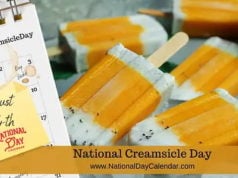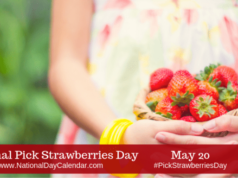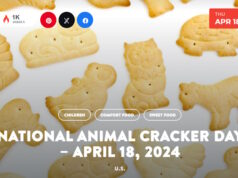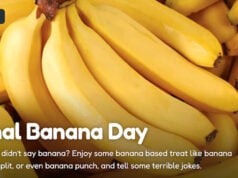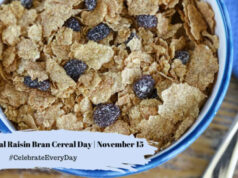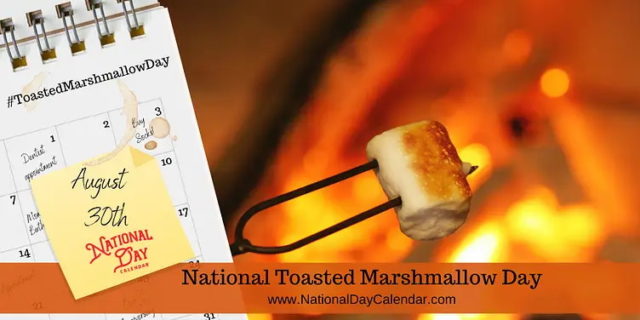
On August 30th, National Toasted Marshmallow Day celebrates one of America’s favorite fire-roasted treats. Be sure to stock up on marshmallows so you can celebrate!
- Believe it or not, marshmallows date back to Ancient Egypt. The mallow plant provided a sap that the Egyptians used to create a candy with nuts and honey.
- Ligonier, Indiana holds an annual Marshmallow Festival (Labor Day Weekend) and is the marshmallow capital of the world.
- The word althaiophobia (say “al-tha-eye-oh-FOH-bee-ah”) is the fear of marshmallows, mostly caused by the gooey texture.
- The marshmallow probably first came into being as a medicinal substance, since the mucilaginous extracts comes from the root of the marshmallow plant, Althaea officinalis, which were used as a remedy for sore throats.
- Concoctions of other parts of the marshmallow plant had medical uses as well.
- Marshmallow was made from the mallow plant (Athaea officinalis) that grows wild in marshes. The term marshmallow was derived both from the native home of the plant and the plant name. Mallow is native to Asia and Europe and has been naturalized in America. The Egyptians squeezed sap from the mallow plant and mixed it with nuts and honey. However, no one knows what the candy looked like in those times.
- The French were introduced to marshmallow in the early to mid-1800s. Owners of small candy stores whipped sap from the mallow root into a fluffy candy mold. This time-consuming process was typically done by hand. Candy stores had a hard time keeping up with the demand.
- Candy makers started looking for a new process to make marshmallows and found the starch mogul system in the late 1800s. It allowed candy makers to create marshmallow molds made of modified cornstarch. At this same time, candy makers replaced the mallow root with gelatin and this created the marshmallow stable form.
- Marshmallows were introduced and popularized in the United States in the early 1900s, after the new manufacturing process was developed.
- In 1948, Alex Doumak revolutionized the process for manufacturing marshmallows. He created and patented the extrusion process. This process involves taking the marshmallow ingredients and running it through tubes. Afterwards, ingredients are cut into equal pieces and packaged. In the 1950s, marshmallows became extremely popular in the United States and were used in a variety of food recipes.
- Americans buy 90 million pounds of marshmallows each year, about the same weight as 1,286 gray whales.
- Each summer more than 50% of all marshmallows sold are toasted over a fire.
- They are generally sold between the months of October and December.
- The plant can be found growing in damp and wet areas including meadows and marshes.
- The sweet sap from the plant has been used for treating common cold and extracts from the roots to treat sore throat.
- The history of the s’more is a mystery. No one knows who started the tradition of roasting marshmallows. However, in 1927 the Girl Scout Handbook was the first documentation of the recipe combining marshmallows with chocolate and graham crackers.
- There are a lot of weird facts about marshmallows, but the strangest might be the Guinness World Record for “farthest marshmallow nose-blow.” Yes, you read that right. Apparently this odd feat was done by having one person blow a marshmallow out of their nostril 5.46 metres to another person, who caught it in their mouth.
- Polar bears like marshmallows. The people who feed the animals at SeaWorld in Florida usually feed them healthy foods like fruits and vegetables, but will occasionally give the polar bears marshmallows as a tasty treat!
- S’more is a contraction of the phrase “some more”. One early published recipe for a s’more is found in a book of recipes published by the Campfire Marshmallows company in the 1920s, where it was called a “Graham Cracker Sandwich”.
Sources:




